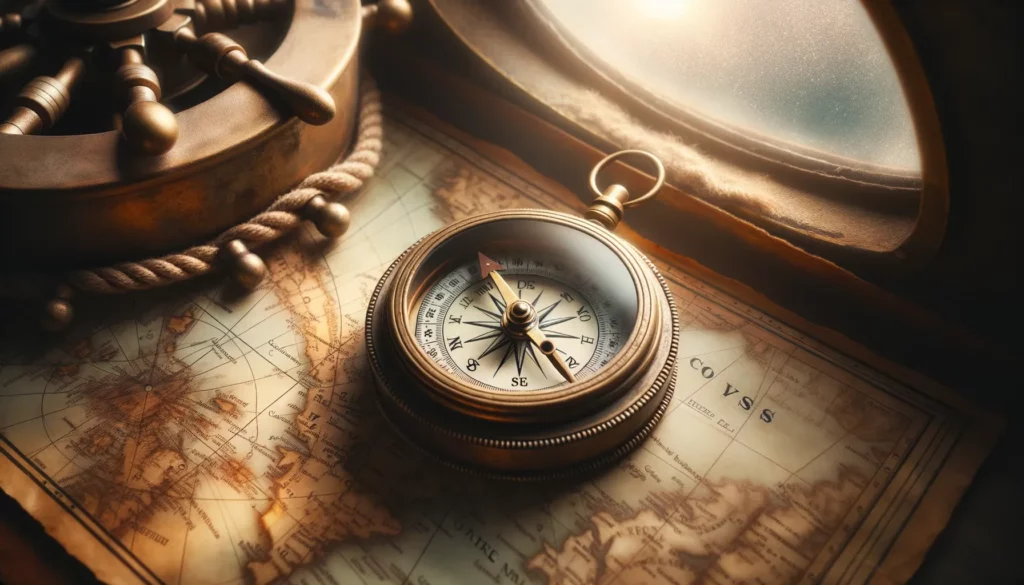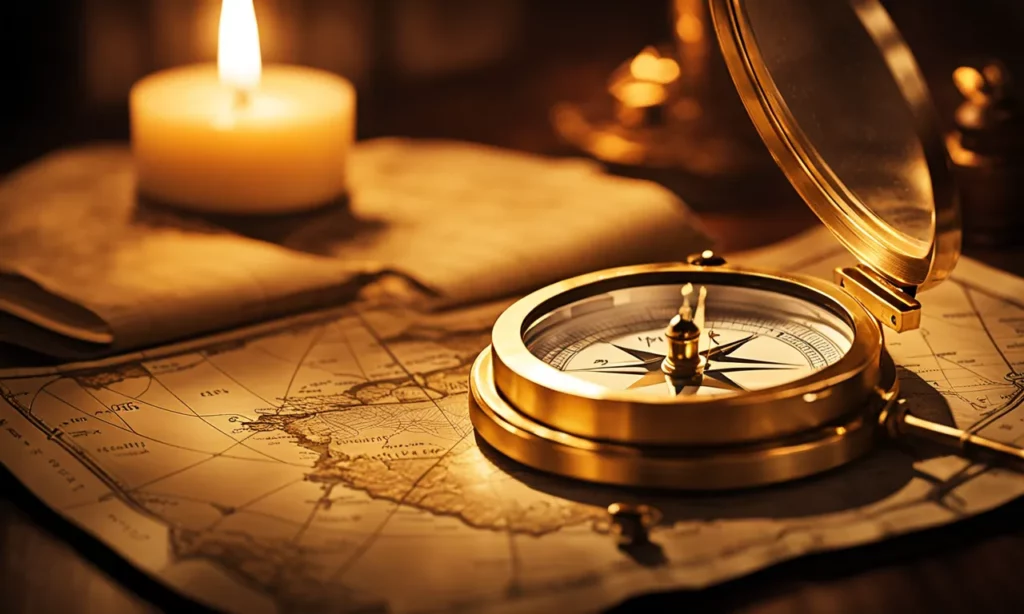Navigating Through Time: 17 Engrossing Facts About Compasses

The compass has been a beacon of hope and guidance for many, offering direction in both a literal and symbolic sense. From its ancient roots in China to its influence on maritime exploration and modern-day uses, this humble tool has been at the heart of human journeys and discoveries. This comprehensive overview dives deeper into 17 captivating facets of the compass.

1. The Birth of the Compass in Ancient China
The origins of the compass trace back to the Chinese Han Dynasty in the 2nd century BCE. Originally, it wasn’t a navigational aid but a tool for divination. The magnetic properties of the compass were first realized when it was observed that a freely suspended magnetized needle aligned with the Earth’s magnetic field.
2. Lodestone: Nature’s Primitive Compass
Before the advent of refined compasses, lodestone, a type of naturally magnetic iron ore, served the purpose. These ancient compasses resembled spoons, and their design was more symbolic, with the handle indicating south and the bowl showing north.
3. The Compass Finds Its Way to Europe
The compass’s journey to Europe during the 12th century was catalyzed by the Crusades and the bustling trade routes of the time. Its introduction brought about a sea change in maritime navigation, allowing sailors to steer their course even when land was not visible.
4. Decoding the Magnetic Declination
Magnetic declination is a pivotal concept in compass navigation. It denotes the difference between the geographic true north and the magnetic north indicated by the compass needle. This discrepancy is influenced by one’s geographical location and evolves.
5. The Elegance of the Compass Rose
Featured on maps and compasses, the compass rose graphically represents cardinal and intermediate directions. Its presence not only aids in orientation but also adds an aesthetic touch to navigational instruments.
6. Mariner’s Compass: Sailor’s Best Friend

Designed for maritime endeavors, the mariner’s compass is equipped with a gimbal-mounted card. This unique feature ensures the compass provides accurate readings, even when the ship sways amidst turbulent waters.
7. Magnetic Compass & Gyrocompass: A Comparative Glimpse
While the magnetic compass relies on Earth’s magnetism for direction, the gyrocompass capitalizes on Earth’s rotation. Though gyrocompasses offer heightened stability and precision, particularly at high latitudes, their complexity and cost make magnetic compasses a more common choice.
8. The Role of the Compass in World Exploration
The Age of Exploration witnessed the compass as a pivotal tool. Its presence reassured explorers like Christopher Columbus and Ferdinand Magellan, guiding them through unchartered territories and facilitating monumental discoveries.
9. The Compass as a Cultural Icon
Beyond its practical usage, the compass holds deep symbolic meanings across cultures. Representing direction, discovery, and spiritual quests, motifs like the compass rose have found their way into various forms of artistic expression.
10. Technological Evolution of Compass Instruments

Modern-day compasses are a testament to technological advancement. Incorporating features like sighting mirrors, GPS integration, and digital displays, they offer users enhanced navigational accuracy and ease.
11. Compasses Soaring in the Skies
In the realm of aviation, the importance of compasses remains undiminished. Aircraft employ a combination of magnetic and gyroscopic compasses, ensuring impeccable navigation during extensive flights.
12. Outdoor Adventures with the Compass
For enthusiasts venturing into the great outdoors, be it hiking, camping, or orienteering, the compass proves invaluable. Especially in areas where GPS signals falter, this tool is a reliable backup.
13. Potential Interferences: Magnetic Anomalies
Magnetic anomalies and the proximity of ferrous metals can influence compass readings. Awareness of these potential disruptions is essential for those who bank on compasses for navigation.
14. A Symbol for the Fearless Explorer

Over the ages, the compass has become emblematic of the exploration spirit, echoing humanity’s never-ending thirst for knowledge, new experiences, and broader horizons.
15. The Resilience of the Compass in the Digital Age
Despite the surge in digital navigational tools, the compass’s relevance remains intact. Admired by sailors, pilots, and nature aficionados alike, its classic design coupled with its historical weight continues to resonate with many.
16. The Science Behind Compass Functionality
A compass capitalizes on the Earth’s magnetic field, with its magnetized needle pointing toward the magnetic north. This straightforward yet impactful mechanism has been directing us for centuries.
17. Diverse Compass Types for Varied Needs
The compass family is diverse, with variations like handheld, marine, and military compasses, each tailored to meet specific navigational needs and challenges.
In summary, the compass, with its profound history and continued relevance, stands as a tribute to our enduring spirit of exploration and discovery. As we journey through life, it remains a constant guide, reminding us of the paths traveled and the adventures that lie ahead.

